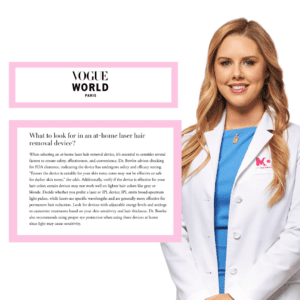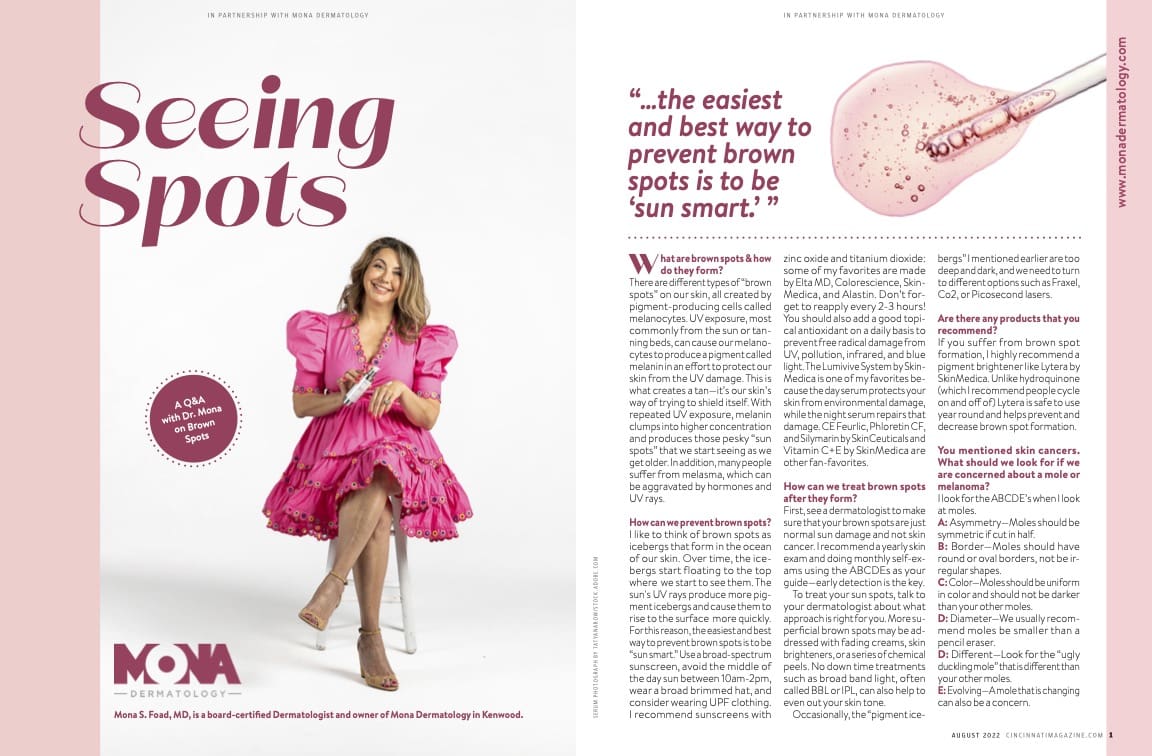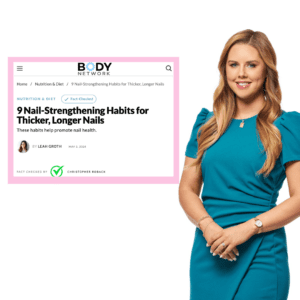At-Home Laser Hair Removal Devices | Featured in Vogue
Dr. Alexandra Bowles shares her insights on at-home laser hair removal devices from her recent Vogue feature: The Best At-Home Laser Hair Removal Devices, According to Experts

Is laser hair removal permanent?
Laser hair removal is often marketed as a permanent solution to unwanted hair, but in reality, it generally results in long-term hair reduction rather than permanent hair removal. Many people experience significant hair reduction after a series of treatments. The treated hair may become finer, lighter and grow slower but not necessarily be completely removed. The FDA considers laser hair removal devices as providing “permanent hair reduction,” not “permanent hair removal.” This means that while treated hair follicles may not regenerate, new follicles can develop due to hormonal changes or other factors. It’s also important to keep in mind that results can vary widely among individuals. Some may experience nearly complete and long-lasting hair removal, while others may see regrowth over time.
Does laser hair removal hurt?
The sensation experienced during laser hair removal varies from person to person. However, most people describe it as uncomfortable rather than painful. Some of our patients who have undergone laser hair removal compare the sensation to a rubber band snapping against the skin or a quick, sharp sting followed by a feeling of warmth. The level of discomfort can vary based on individual pain tolerance, the area being treated, and the type of laser used.
For example, areas with thinner skin or more nerve endings, such as the upper lip and bikini line areas, tend to be more sensitive than others, like the legs and back. Hair and skin type can also affect the level of discomfort, whereby dark, coarse hair typically absorbs more laser energy, which can make treatments more intense. Oppositely, individuals with lighter hair might feel less discomfort due to the lower absorption of laser energy.
Is laser hair removal safe?
Laser hair removal is generally considered safe when performed by a trained and licensed professional. However, as with any cosmetic procedure, there are potential risks and side effects to always keep in mind.
For example, some common side effects are redness and swelling, which usually subside within a few hours, and temporary discomfort around the treated area. Less common or rare side effects include pigment changes, skin irritation, and scarring if the skin is improperly treated. Nevertheless, when undergoing laser hair removal, patients have to make sure to follow any pre and post-treatment guidelines provided by their physician to ensure the best results.
How does laser hair removal work?
Laser hair removal uses concentrated light energy to target and destroy hair follicles, inhibiting future hair growth. The laser device emits a beam of light that is absorbed by the pigment (melanin) in the hair. The absorbed light energy is then converted into heat, which damages the hair follicle, specifically the bulb and bulge responsible for hair growth. The laser inhibits or delays future hair growth by damaging these key structures within the hair follicle.
Is laser hair removal safe for all skin types?
Laser hair removal is generally safe and effective for all skin types as long as the laser and settings used are appropriate for the skin type. The effectiveness and risk of side effects however can vary based on skin tone and hair color. For this reason, it’s important for patients to always have a thorough consultation with a licensed professional who has experience treating your specific skin type. Qualified practitioners would typically administer a spot test. This will allow them to determine how your skin will react to the laser and to choose the appropriate settings.
What to look for in an at-home laser hair removal device?
When choosing an at-home laser hair removal device, it’s essential to consider several factors to ensure safety, effectiveness, and convenience. For one, look for FDA clearance, which indicates that the device has undergone testing for safety and efficacy. Check if the device is suitable for your skin tone. Some devices may not be effective or safe for darker skin tones. Verify if the device is effective for your hair color. Lighter hair colors, such as gray or blonde, may not respond well to certain devices.
Decide whether you prefer a laser or IPL device. IPL devices emit broad-spectrum light pulses, while laser devices use specific wavelengths of light. Laser devices are generally considered more effective for permanent hair reduction. Look for devices with adjustable energy levels and settings to customize treatments based on your skin sensitivity and hair thickness. I also recommend patients obtain proper eye protection if they choose to use these devices at home.
Which ones do you recommend?
Specific recommendations may vary based on individual needs and preferences. Some popular and highly-rated at-home laser hair removal devices that I have come across include:
- Philips Lumea Prestige IPL Hair Removal Device
- Tria Beauty Hair Removal Laser 4X
- Silk’n Infinity Hair Removal Device.
These devices are popular for their effectiveness, versatility in treating a range of skin tones and hair colors, and user-friendly features such as adjustable settings and ergonomic designs. Additionally, they have received positive reviews from users, highlighting their reliability and noticeable hair reduction results over time.


